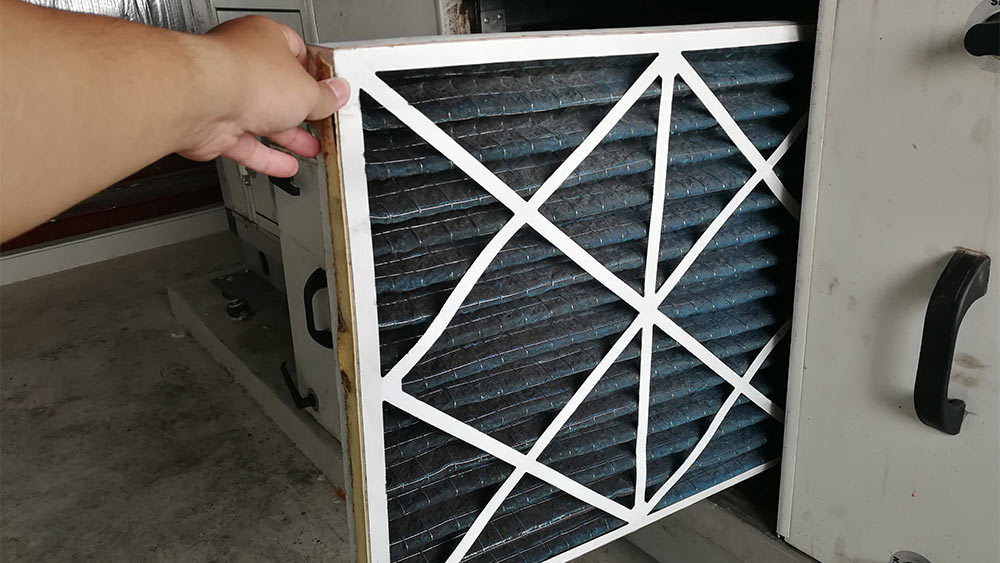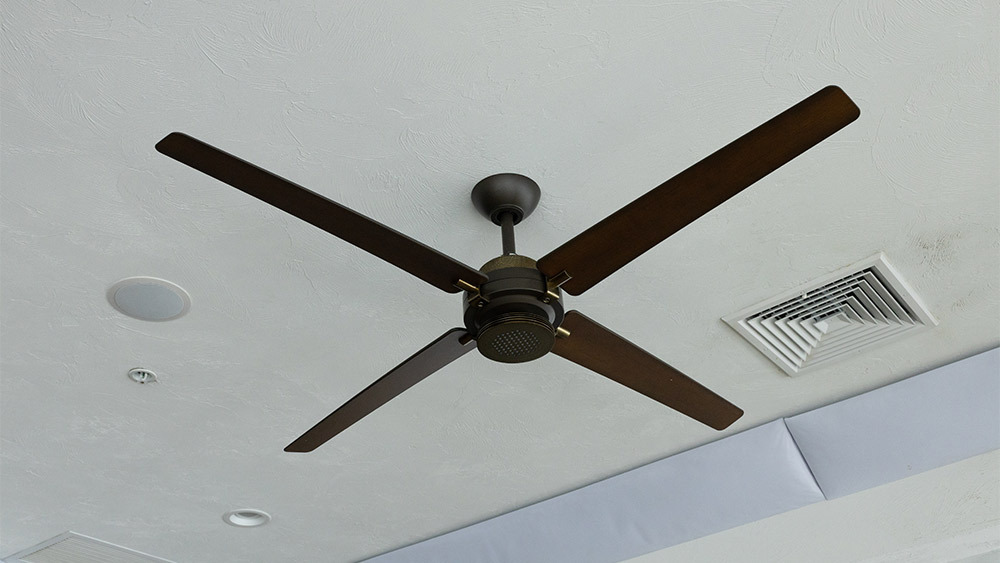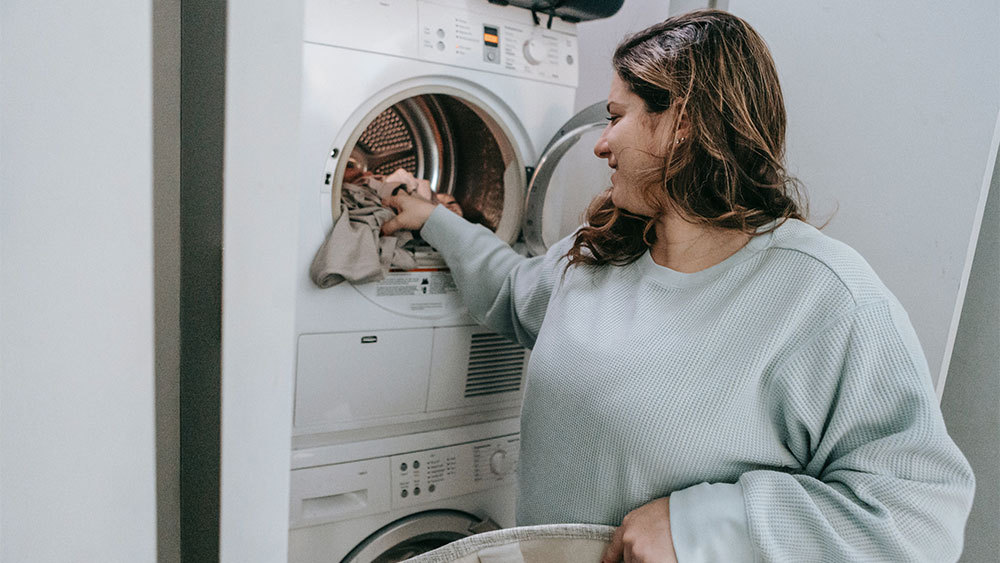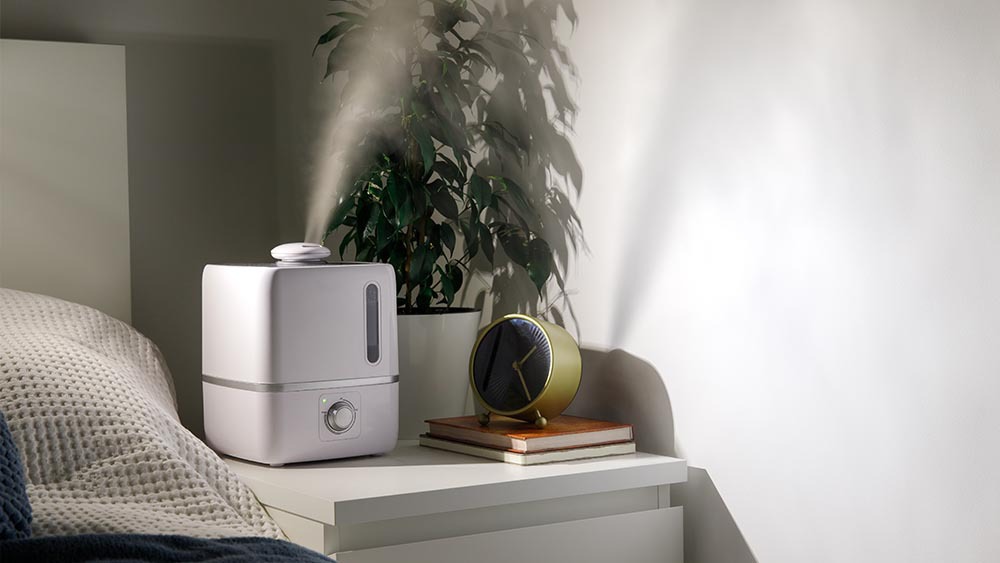
Key Takeaways
- High heating bills can stem from poor home insulation and inefficient HVAC systems.
- Use a smart thermostat to automate temperature adjustments and optimize energy use.
- Seal air leaks and ensure proper insulation to retain heat and improve efficiency.
Space heating costs make up nearly half of your home’s utility bills. That is a big chunk of money in itself, but paired with environmental and economic aspects, this amount can significantly increase.
Home heating costs in the US are projected to rise by an average of 10.5%, leading to an increasing number of households struggling to afford their bills. While you can’t control the prices, finding creative ways to stay warm without overspending is essential. Small, practical steps, such as setting back your thermostat, sealing air leaks, and scheduling regular HVAC maintenance, can make a notable difference in reducing your heating bill.
This blog explores the reasons why your heating bill is high and discusses tried-and-tested methods for saving on heating costs without compromising on comfort.
Why is Your Heating Bill So High?
There are many factors that can impact your heating bills, such as your home insulation, the condition of your heating system, your thermostat settings, rising inflation, and global climatic changes.
- Extreme weather events driven by climate change are contributing to rising energy costs. For example, high winds and dry conditions have led to an increase in wildfires, particularly in the West. These wildfires have badly damaged the power grids and electricity prices there could nearly increase by 23%.
- Your home could be losing heat due to poor insulation, air leaks around windows and doors, or even around power outlets or fireplaces.
- If you are maintaining a constant temperature throughout the day, it can lead to high bills. The reason is that your unit is working unnecessarily even when it’s not required, such as when you are away.
- If you tend to dress in lighter clothing around the house, you may actually need to keep your home warmer, which can raise your bills.
- The age and condition of your heating system can significantly impact your energy usage and expenses. For instance, older furnaces have a low annual fuel utilization efficiency (AFUE), meaning they use more fuel and energy.
22 Ways to Save Money on Your Heating Bill
Here are 22 fail-safe strategies that you can implement to stay warm and cozy without breaking your bank.
1. Let Your Thermostat Do the Thinking
It’s no secret that smart thermostats for central and room units can help you save on energy bills. They provide precise and convenient control, allowing you to fine-tune temperatures according to your schedule and preferences. This level of customization ensures that your HVAC system operates only when necessary, reducing unnecessary energy consumption.
Furthermore, remote control and monitoring features enable you to make real-time adjustments even when you are away from home, ensuring efficient energy use and ultimately leading to noticeable energy savings.
2. Adjust Your Thermostat
Setting back your thermostat 7-10 degrees from its standard settings for a duration of eight hours can result in substantial savings, potentially cutting your heating expenses by up to 10%. This adjustment can be easily implemented during periods when you are not at home or while you are asleep.
Related: Energy-Efficient Thermostat Settings to Maximize Savings & Comfort
Lowering the temperature at night can actually promote more restful sleep, as it aligns with your body’s natural temperature drop during slumber. In fact, the recommended ideal sleeping temperature is around 65, and by following this practice, you can achieve energy savings without sacrificing comfort.
Tip: Having a smart thermostat can automatically make changes without you having to manually adjust the temperature at different times. You simply have to set a schedule, and your preferred temperature will be implemented.
Related: A Complete Guide to Finding the Perfect Thermostat Settings for Your Home
Equip your HVAC system with smart features and achieve the perfect balance between comfort & savings.
Learn more
3. Opt for a Room Heating Unit
Installing room units such as mini-split heat pumps can help you stay cozy without cranking up the whole house temperature. These systems are considered highly energy efficient as they do not have any ducts that can contribute to energy loss. You can also customize each room’s temperature depending on individual needs by pairing them with smart mini-split thermostats such as Cielo Breez. They have dozens of smart features such as scheduling, geofencing, and Comfy Mode that help you automate your room climate based on your routine and preferences.
For small areas where you don’t require heating all the time, such as the garage or a shed, you can opt for a space heater or a portable heat pump.
Your best choice to make any mini-split, window,
or portable AC smart. Enhance your comfort and savings.

4. Use Energy-Efficient Appliances
Upgrading your appliances to the latest models can help save on heating costs as newer technology focuses more on energy efficiency. For example, new furnace and boiler systems can run at 90 to 98.5% efficiency, whereas older versions are only 56 to 70% efficient.
While looking for upgrades, you might also want to consider furnaces that run on alternative energy sources. For instance, all-electric furnaces and boilers are very costly to run, whereas those powered by solar energy are a better option (more on that later!). You might also want to consider heat pumps as they are highly energy efficient. According to the Department of Energy, they can reduce your electricity consumption by 50% as compared to furnaces and baseboard heaters. If you live in an area with extreme winter temperatures, consider using cold-climate heat pumps. These systems are designed to efficiently heat your home even in very low temperatures, helping you save on energy costs while maintaining comfort.
5. Maintain Your Heating System

Maintaining your HVAC system is essential for ensuring both your comfort and finances are in order. Every heating system is different, but most of the maintenance tasks are quite similar.
The air filters require periodic cleaning and replacement for optimal performance. They also trap various air pollutants, and if they are not changed on time, it can impact your indoor air quality.
Related: How to Clean Your AC Filter for Optimal Performance
You should also schedule a professional tune-up, as it involves checking all aspects of your heating system. For instance, burner cleaning is a common task during a furnace check-up, and it can make a significant difference in your energy consumption. Ductwork is another HVAC component that requires professional inspection. Fixing duct leaks can help you save hundreds of dollars a year. As much as 30% of heated air is lost to leaks in ductwork, leading to higher energy bills and reduced comfort.
Related: HVAC Preventative Maintenance: Complete Guide With Checklist
6. Hack Your Fireplace
It’s easy to forget to close the flue and damper of your indoor fireplace. Open flues tend to invite pests into your home while allowing hot air to escape and cold air to sneak in. Keeping the fireplace sealed can lower heat loss and save on your heating bill. Consider hiring a pro to ensure your chimney is properly sealed. If your fireplace damper came without labels, you can create tags to use as a visual reminder to open or close them.
7. Run Your Ceiling Fans in Reverse

It may sound like madness, but your ceiling fans are also designed to be used in the colder months. Therefore, nearly all ceiling fans come with a clockwise and counterclockwise setting.
The clockwise setting draws cool air up and forces warm air down, making your home more comfortable in the colder months. In summer, your ceiling fan’s direction for cooling should be counterclockwise. This creates a downward airflow to cool down your room.
To change the setting, locate the switch on the fan and make the adjustment.
8. Seal Air Leaks
Gaps or cracks around your home can lead to energy loss and can be one of the top reasons why your heating bill is high.
According to the EPA, you can save up to 15% on heating and cooling costs by sealing up any air leaks. Use weatherstrip or caulk to seal gaps around your doors and windows. Inexpensive draft stoppers can also help prevent cold air from coming inside. Also, check for leaks around pipes, switchboards, furnace flue, and ductwork and seal them using a sealant.
If your home was built before 1980, be sure to check the overall insulation, as older homes are more likely to need an upgrade.
Related: How to Find Air Leaks in House? – Easy Fixes for a Drafty Home!
9. Apply Window Treatments
A whopping 30% of your home’s heating energy is lost through uninsulated windows. Floor-length window coverings with insulated foam centers can keep cold air out and heat inside. Low-E window film effectively adds a layer of insulation without sacrificing natural light, reflecting heat back into your home during the cold winter months. Thermal curtains made from thick, densely woven fabric can also help reduce heat loss. Check out this complete guide on window insulation.
10. Beef Up Your Home Insulation
If you are looking to increase energy efficiency, one of the first steps to take is to ensure your home insulation is up to par. You can easily find out how much insulation your house requires by adding your zip code to the Department of Energy’s insulation tool.
Foam board insulation can be applied to any part of your house. It provides thermal resistance 2 times more than other types of insulation.
11. Go Green With Heating
Opting for solar energy is great if you’re always worried about high heating bills.
According to Justin Bohannon, owner of Tech-On-Deck Heating, Air & Electric, “When it comes to achieving energy savings for heating during winter by utilizing solar energy, it is important to consider the different options available. One option is to install solar panels to generate electricity, which can be used to power electric heating systems such as heat pumps. Another option is to utilize solar thermal systems to directly heat water or air, reducing the need for conventional heating sources.”
Related: Solar Powered HVAC Systems: A Comprehensive Guide
Gas prices fluctuate a lot, and this way, you can avoid paying gas bills at all. Additionally, by using solar energy, you might be eligible for the 30% tax credit that governments in some areas offer to encourage the use of renewable energy.
However, this hack comes with steep upfront costs. You will need to invest in solar panels and a solar battery and install central electric heating if you don’t already have a system in place.
12. Let the Sunshine In
If you are looking to save money on your heating bills, letting the sun inside your home can make a big difference. By opening your curtains during the day, you can take advantage of the sun’s natural source of warmth. Then, when the sun goes down, make sure to close your curtains to trap in the heat. For maximum efficiency, it’s important to keep trees and shrubs pruned away from the sides of your home where there is good sun exposure.
According to Ryan Farley, CEO of Lawn Starter, “Trimming trees by removing branches or trunks that shade your house can allow more direct sunlight to warm it up. This is especially true for evergreens, which provide consistent shade and don’t drop their leaves in winter.”
You can also consider passive solar heating, which uses solar energy without any mechanical systems. It is a more sophisticated approach than just opening the blinds. It involves strategically placed windows that allow sunlight to enter. Thermal mass materials like brick, stone, or masonry walls then capture the heat and release it when required.
13. Cool Down Your Laundry

Hot water can drive your heating bill up quite a lot. According to Energy Star, water heating consumes about 90% of the energy it takes to run a washer. You can cut your bills in half by switching the settings from hot to cold. Also, whenever it’s possible, opt for air drying instead of a dryer to save on energy.
14. Schedule an Energy Audit
Getting an energy audit can help improve your home energy efficiency. It involves a series of tests that take a look at the efficiency of your HVAC unit and your house overall. During the audit, a technician will use a special thermal meter to identify areas of heat loss in your home. This information can be helpful in determining where to focus your efforts when making improvements.
Related: Is an HVAC Energy Audit Worth Going For?
15. Use Less Hot Water for Shower
Water makes up a significant chunk of your heating bill. Avoid using boiling water for showers, as it costs more and strips moisture from your skin. Instead, opt for lukewarm showers and inexpensive bathroom heating solutions for added comfort.
16. Prepare Food at Home
Whether you’re roasting vegetables in the oven or frying up a batch of crispy French fries on the stove, these activities release heat, keeping your house nice and toasty. This also helps to save money on your heating bills as you won’t have to turn up the thermostat to feel comfortable.
17. Use A Humidifier

During the winter months, keeping warm can often come with a hefty price tag. Luckily, there is a cost-effective solution that may help. Adding a humidifier can help keep you warm without turning up the thermostat. The reason is moist air holds more warmth than dry air, and you won’t have to crank up the heat to keep warm.
Related: Maintaining Ideal Indoor Humidity in Winter: A Comprehensive Guide
18. Clear Your Vents
Move couches, chairs, or any other bulky items away from the vents to allow the warm air to flow freely throughout your home. When the vents are blocked, your heating system has to work harder to push warm air through, which not only increases your energy costs but also reduces the effectiveness of your unit. Additionally, it’s important to ensure that your heat registers and dampers are fully open to allow for the full flow of warm air.
19. Negotiate Billing Rates
If you live in a deregulated state, you can negotiate for better energy rates. Reach out to your state or energy company for information and assistance if you’re unsure about how to navigate this process. Depending on your income, you may also be eligible for the Low Income Home Energy Assistance Program (LIHEAP) to reduce your energy expenses further. You can apply for it using your state’s website.
20. Shut Doors in Unused Rooms
You may have some extra rooms in your home, such as the guest room that is not used regularly.
By closing the doors to these areas, you can keep the warm air in the rooms you use most often. An effective way to seal off those rooms is to add a draft blocker at the base of the door.
To maximize the efficiency of your heating system, consider closing any vents in unused rooms to prevent warm air from traveling there.
Note: Be mindful if your water pipes are located in unused rooms, as temperatures lower than 40F can cause pipes to freeze and burst. To counter this, you can use a room heating unit such as a mini-split and utilize its freeze protection (FP) mode to prevent pipes from freezing up.
21. Bundle Up for Warmth
By donning a sweater or switching to pants made from wool or denim, you can drastically improve your comfort levels without cranking up the heat. Additionally, keeping your feet warm with a pair of cozy socks is a great way to maintain your body heat. When it’s time to settle in for the night, consider curling up under an extra blanket to keep warm.
22. Reduce Exhaust Fan Usage
While exhaust fans suck unpleasant odors and moisture from your home, they can also remove a lot of heat.
In winter, it’s best to avoid running your kitchen or bathroom vent fans unless it’s absolutely necessary. Additionally, because the air in winter is already quite dry, there may be no need to use vent fans after every shower. The same goes for the kitchen, as the heat from cooking food can be used to keep warmth inside. However, it’s recommended that you use it when cooking with gas-burning appliances.
Winter Energy Saving Tips
As energy costs continue to climb, it’s crucial to implement energy-saving strategies in your home to reduce bills. Make sure your home is well-insulated. Invest in energy-efficient appliances to reduce energy consumption. Opt for smart climate control appliances and set back your thermostat when you aren’t home. Consider weatherizing your doors and windows to prevent drafts. Also, keep in mind that proper maintenance of your heating system will ensure that you are not using more energy than necessary to stay comfortable. By implementing these tips, not only will you be saving money on energy bills, but you will also be reducing your carbon footprint, contributing to a more sustainable environment.









1 Comment. Leave new
I see you suggest improving home insulation in order to cut down on costs – that’s great. Sealing and insulating your air ducts can improve the efficiency of your system by 20 percent or more.